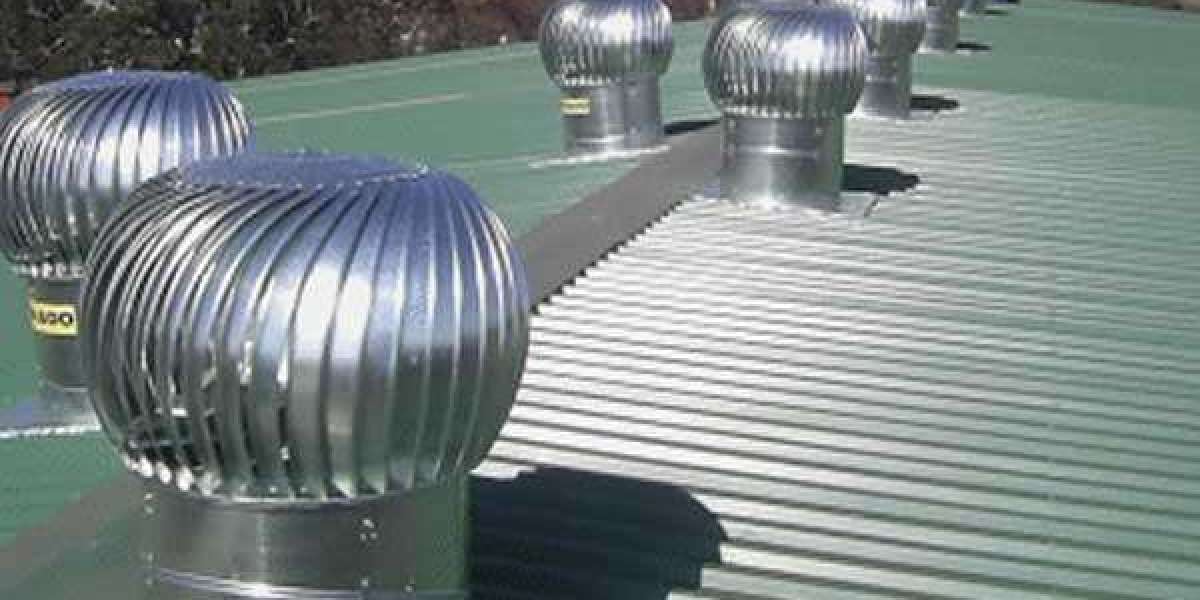Maintaining a well-ventilated warehouse is crucial for ensuring the safety of both the stored goods and the employees. Poor ventilation can lead to the accumulation of humidity, mold, and airborne contaminants, which can damage inventory, create hazardous working conditions, and increase operational costs. Optimizing warehouse ventilation is an essential step in improving air quality, preventing moisture-related issues, and maintaining a safe, comfortable working environment. This article will explore the top strategies for optimizing warehouse ventilation to prevent humidity and contaminants.
1. Implement a Balanced Ventilation System
A balanced ventilation system is one of the most effective ways to maintain optimal air quality and humidity levels in a warehouse. This system introduces fresh outdoor air while simultaneously removing stale air from the building. By maintaining a balance between the intake and exhaust of air, it helps regulate indoor humidity levels, preventing excessive moisture buildup that could lead to mold and rust formation.
How to Implement:
- Install supply and exhaust fans to facilitate the intake of fresh air and the removal of stale air.
- Use air handling units equipped with filters to ensure that contaminants like dust and pollen are removed from incoming air.
- Adjust fan speeds and air intake points based on warehouse size and storage needs.
Benefits:
- Reduces the buildup of moisture that contributes to mold growth.
- Improves overall air quality by removing dust, fumes, and other contaminants.
- Enhances worker comfort and health by providing a constant supply of fresh air.
2. Utilize Dehumidification Systems
In warehouses where humidity levels tend to rise (such as those storing sensitive goods like electronics, paper products, or pharmaceuticals), dehumidifiers can be a critical component of the ventilation system. These systems are designed to remove excess moisture from the air, keeping humidity levels within an acceptable range and preventing damage to stored goods.
How to Implement:
- Place dehumidifiers strategically throughout the warehouse to target areas most prone to humidity buildup, such as basements or areas near doors.
- Choose industrial-grade dehumidifiers designed to handle the size and airflow requirements of large warehouses.
- Monitor humidity levels regularly using hygrometers or automated systems that trigger dehumidifiers when humidity exceeds a set threshold.
Benefits:
- Helps prevent mold, mildew, and rust that can form when humidity is too high.
- Protects inventory from water damage, such as warped wood, rusted metal, and degraded paper products.
- Improves worker comfort by reducing excessive moisture in the air, which can contribute to fatigue and discomfort.
3. Use Airflow Distribution Fans
To ensure effective ventilation throughout the entire warehouse, it is important to improve the distribution of airflow. High-volume, low-speed (HVLS) fans can be used to circulate air throughout the space, preventing stagnant air pockets where moisture can accumulate. These fans are particularly useful in large warehouses with high ceilings, as they can move a large volume of air efficiently.
How to Implement:
- Install HVLS fans in areas where airflow is insufficient, such as corners, aisles, or storage areas.
- Use adjustable fan speeds to match seasonal conditions and the amount of heat or humidity present.
- Ensure fans are properly maintained and cleaned to maintain optimal airflow.
Benefits:
- Enhances the overall air circulation, helping to reduce hotspots of high humidity.
- Prevents condensation on walls, ceilings, and stored products.
- Improves energy efficiency by reducing reliance on air conditioning or mechanical ventilation systems.
4. Optimize Temperature Control
Temperature and humidity are closely linked, and controlling both is crucial for preventing moisture buildup in the warehouse. Using HVAC systems in combination with ventilation strategies helps regulate indoor temperatures, which in turn helps prevent condensation and the accumulation of humidity.
How to Implement:
- Install programmable thermostats and humidity sensors to monitor and control the temperature and humidity levels in the warehouse.
- Use heating, ventilation, and air conditioning (HVAC) systems to maintain a consistent temperature, especially during seasonal changes.
- Ensure that temperature fluctuations are minimized, as they can exacerbate humidity problems (e.g., when warm air meets cooler surfaces).
Benefits:
- Prevents condensation on surfaces, which can lead to mold and rust.
- Creates a stable environment that protects sensitive inventory from damage.
- Enhances worker comfort by maintaining a consistent and comfortable indoor climate.
5. Install Exhaust Fans and Vents in High-Risk Areas
Certain areas of a warehouse, such as loading docks, kitchens, or rooms with machinery, are more prone to the buildup of contaminants like dust, smoke, or fumes. Installing exhaust fans and vents in these high-risk areas helps remove harmful particles from the air, ensuring that they don’t spread throughout the warehouse.
How to Implement:
- Place exhaust fans near areas where pollutants or moisture are likely to accumulate, such as near equipment, doors, and workstations.
- Install vents or louvered openings to allow air to escape naturally, especially in areas that require constant airflow.
- Regularly inspect and clean exhaust fans and vents to ensure they remain free of debris.
Benefits:
- Removes airborne contaminants that could harm both workers and stored goods.
- Prevents the buildup of dangerous fumes, such as carbon monoxide or chemicals, which can be harmful to health.
- Reduces the risk of contamination by keeping hazardous particles from circulating within the warehouse.
6. Improve Warehouse Insulation
Proper insulation can play a significant role in regulating temperature and humidity levels inside a warehouse. Insulated walls, ceilings, and floors help maintain a stable indoor environment by reducing the impact of outdoor weather conditions. This prevents excessive heat or cold from entering the warehouse, which can trigger condensation and moisture buildup.
How to Implement:
- Ensure that insulation is installed in walls, roofs, and floors to prevent heat transfer between the interior and exterior.
- Use moisture-resistant insulation materials, such as spray foam or rigid foam board, to prevent moisture absorption.
- Seal any gaps, cracks, or openings in the building structure to prevent the infiltration of outdoor air.
Benefits:
- Stabilizes the indoor temperature, reducing the risk of condensation that can cause moisture-related issues.
- Increases energy efficiency by minimizing the need for heating and cooling systems.
- Protects stored goods from temperature fluctuations that could lead to damage.
7. Regular Maintenance and Monitoring
Finally, regular maintenance and monitoring are key to ensuring that your warehouse’s ventilation system operates effectively. Periodically check the system’s components, including fans, ducts, and filters, to ensure they are clean and functioning properly. Monitoring humidity levels and air quality with sensors or manual checks will help identify issues early before they escalate.
How to Implement:
- Set up a regular maintenance schedule to inspect and clean ventilation components.
- Install automated sensors to monitor humidity and air quality levels, triggering corrective actions when necessary.
- Train staff to report ventilation-related issues and to understand the importance of keeping ventilation systems clean and efficient.
Benefits:
- Prevents issues like blocked ducts, damaged fans, or clogged filters that can impair ventilation performance.
- Allows for quick detection of humidity or contamination problems, reducing the risk of long-term damage to goods.
- Extends the lifespan of the ventilation system by keeping it in optimal working condition.
Conclusion
Optimizing warehouse ventilation is a critical step in preventing humidity and contaminants that can lead to product damage, health hazards, and increased operational costs. By implementing strategies like balanced ventilation, dehumidification, temperature control, and regular maintenance, warehouse operators can create a healthier, safer environment for both employees and stored goods. With careful planning and the right systems in place, warehouses can maintain optimal air quality, reduce moisture-related problems, and protect valuable inventory from harm.








